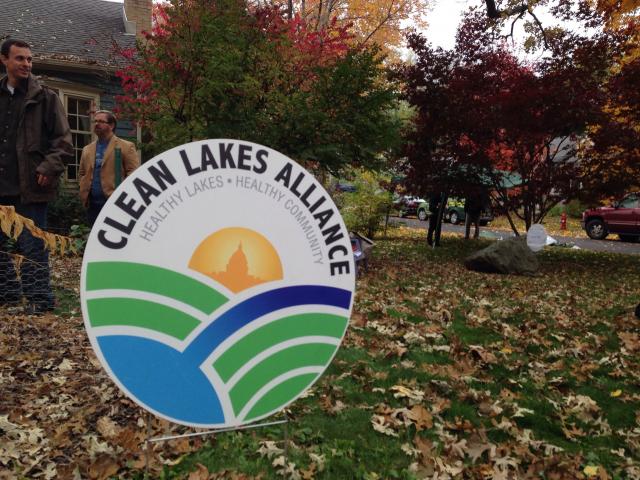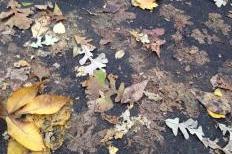







Tucked away in the Sunset Village neighborhood on Madison’s West side, the Clean Lakes Alliance (CLA) held a leaf and water management workshop for community members on Oct. 17.
The workshop’s main focus was on teaching the public about the harmful effects phosphorus has on Madison’s lakes, and what home-owners’ can do with their water runoff and leaves to help combat this chemical.
“We need to have everyone in on this,” said Paul Dearlove from the CLA. “It’s not just government, every yard counts.”
Phosphorus from leaves is a major fertilizer for algae, which gets into the lake through storm drains and runoff from yards. According to Dearlove, one pound of phosphorus generates about 500 pounds of algae, creating the green sludge so often detested in Lake Mendota, Monona and Wingra.
The workshop also featured other local organizations from around Madison, including RainReserve, Weed Man, Friends of Lake Wingra, Natural Resources Foundation, and Boy Scout Troop 16 who helped with the raking.
“Rain barrels make a great holiday gift,” said Brent Moroder from Rain Reserve, only half-joking. “But storm
Moroder represented the Build-a-Barrel product from Rain Reserve at the workshop, and showcased how to set up barrels to capture storm water from drain pipes. Preventing this water from running into the streets and sewers limits the amount of phosphorus that is transported to the lakes.
A half-inch of rain in a 1,000 sq ft. results in 300 gallons of water. Multiply that by the size of Madison, and you have millions of gallons with the potential of bringing algae growing nutrients to our lakes
Over the course of the workshop, Boy Scout Troop 13 helped rake leaves off the street, while representatives from the organizations showed the public how to build rain gardens, store and compost leaves, and manage storm water.
“Citizens have to take the lead,” Dave Thompson from Friends of Lake Wingra said. “We’re having trouble bringing the city into the modern world.”
Thompson believes that the city could be doing more to help keep Madison’s lakes clean. Neighborhoods with curbs and gutters contribute more to the problem, as water runoff and leaves have nowhere to go but directly into drain system. Furthermore, people can’t create rain gardens next to curbs, which helps water stay out of the street and sink into the ground.
Dearlove and the Clean Lakes Alliance were rewarded for their hard work at the workshop, receiving a check for $1,000 dollars from the Natural Resources Foundation. The money will go towards researching what Madison community members already do to help keep the lakes clean, and what the CLA can continue to do to combat algae and uncleanliness in Madison’s lakes.
|
|
|
Welcome to the Madison Commons, a website designed to provide news and information about all of Madison's neighborhoods and a crossroads for the discussion of community issues. The name comes from the idea of a village commons, a place for news, talk, debate, and some entertainment, too, that's open to everyone.
All rights reserved. Read more about the Madison Commons and its partners.

